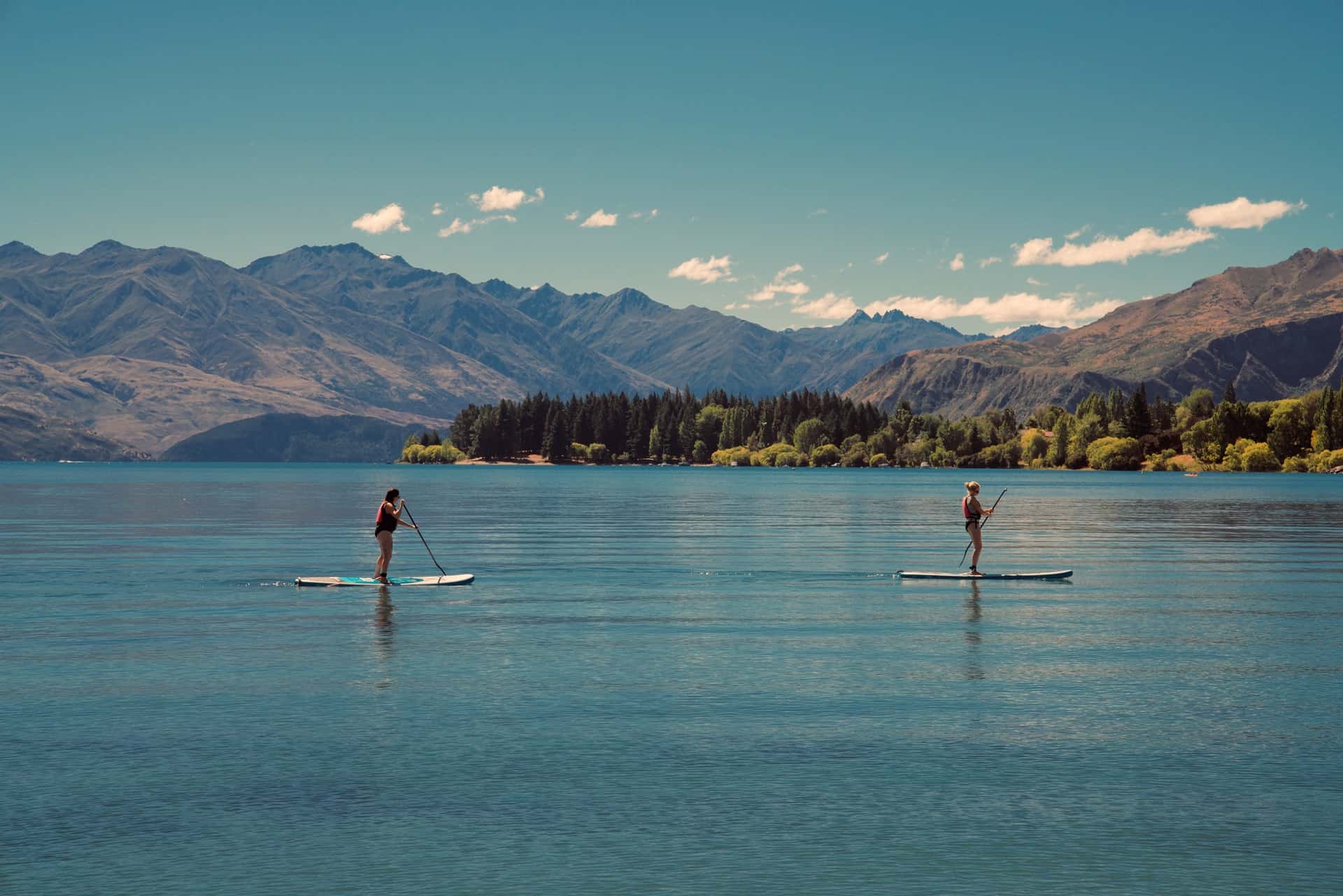
Paddleboarding is still a developing discipline tailored for lovers of extreme water sports. How to start your adventure with paddle boarding? Here are some practical tips.
Stand Up Paddleboarding (SUP) is a perfect example that genius lies in simplicity. To practice this sport, all you need is a board with a paddle and a body of water. When it comes to the form it has virtually no restrictions – we can swim in small lakes, as well as wild rivers, or exotic oceans. What is important, everyone can try their hand at this sport, regardless of age, physical fitness and skills. However, before starting the extreme challenge it is worth knowing at least a few basic tips.
The right body posture is the key to successful and safe swimming. In order to achieve it, you should keep your feet parallel, and then spread them to the width of your shoulders. If your feet are joined together, it is very easy to capsize! It may seem too simple, but that’s really it when it comes to positioning yourself on the board.
Now that we have the correct posture, it’s time for another aspect of technique, namely holding the paddle. We should catch it with our hands at shoulder height – thanks to a long grip we will have much more power. The paddle blade should be completely immersed in the water, making a long movement and working the muscles of the back, in such a way that they relieve the more susceptible to fatigue shoulders. Also, by working your back muscles, your push-offs will be much stronger.
Swimming in a straight line is one of the basic rules of subleboarding. If we are to succeed, we must alternate between a few strokes with the paddle on one side, followed by a few strokes on the other side. Remember to change the position of your hands every time you change sides!
The right equipment is often the key to success – especially if you are new to the sport. A common mistake made when starting out with paddleboarding is trying on a board that is too small, which leads to serious difficulties in catching your balance. For the first swim, it is worth taking equipment of a slightly larger size, which will certainly help us adapt to new circumstances. There will be time for smaller, more maneuverable boards.
During extreme sports we have to take care of our own safety as well as safety of other participants of the fun, which unfortunately is not so obvious for everyone. We should never go into the water on our own, regardless of experience. In addition, do not forget about the standard equipment for water sports, namely a buoyancy vest.
main photo: unsplash.com/Matt Zhou